|
|
| Разместил (Author): |
SergUA6  |
| Авторские права |
© http://www.radioscanner.ru |
|
|
Текст
|
The example of analysis of the real signal 2008_21_12_fm.wav
The first mandatory step is the testing of the record on suitability for analysis. This step does not guarantee exact diagnostics, and the main objective of the test is the tentative estimation of chances of success. If will be found out, that the record is made with rough disturbances, has strong distortions or was exposed to a compression, then the chances of carrying out of the qualitative analysis are extremely small.
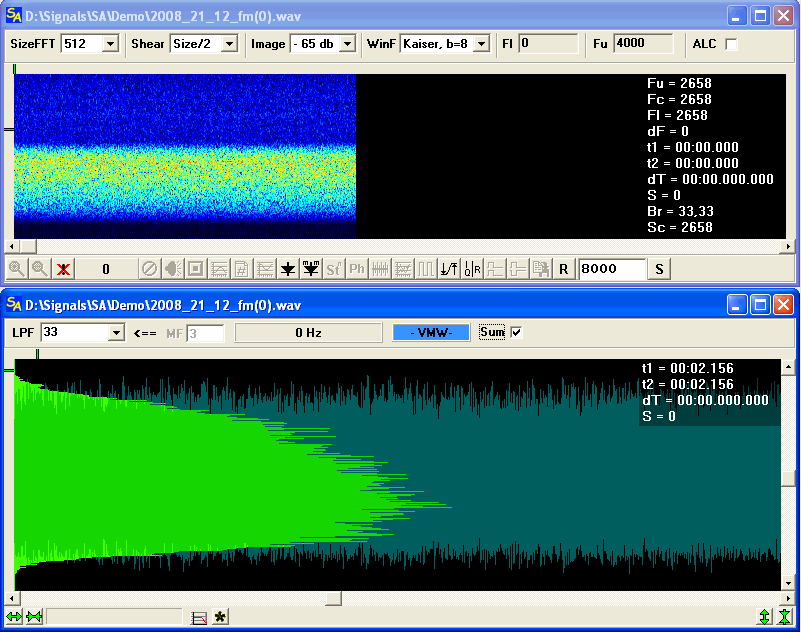
In generall, the there are no big problemst, and it is possible to hope that the efforts spent for the analysis will be not vain. The record seems to has a notable blockage/obstruction of level on the low frequencies, but it is not the reason for refusal of the analysis.
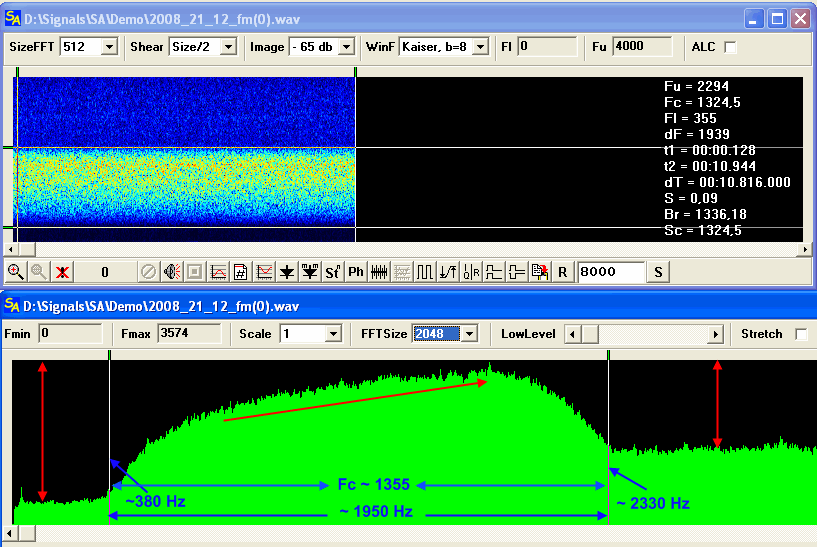
We get, where possible, the preliminary "measures" from the signal, at the same time we are marking that the blockage/obstruction is really present. When we say "Measures" here, we mean:
1) preliminary, and rough enough estimates, of the spectrum's centre of the signal
2) presence and direction of distortion/defect of the spectrum, of spectrum's width and etc
All that can be useful further for specification conclusions and summarys.
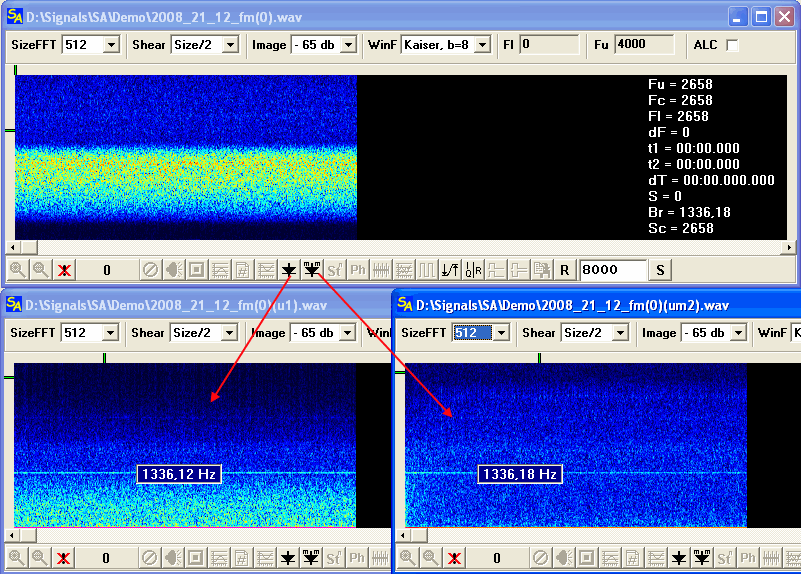
We receive clock frequency of manipulation, through two methods, both methods give identical results. The line of the clock frequency is clear and bright enough, that gives grounds to consider the received value relieble.
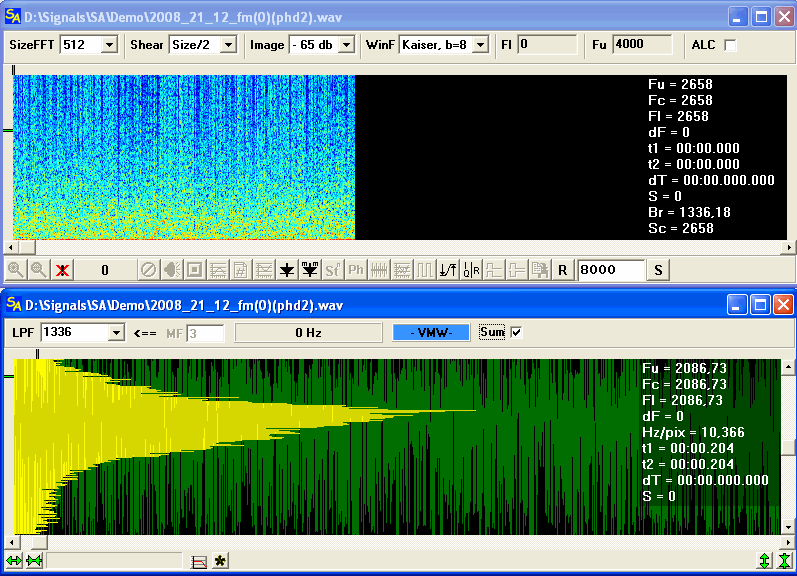
We check the version that it is FSK, MFSK or something like that. The version does not prove to be true, the histogram does not show any obvious allocation of frequencies.
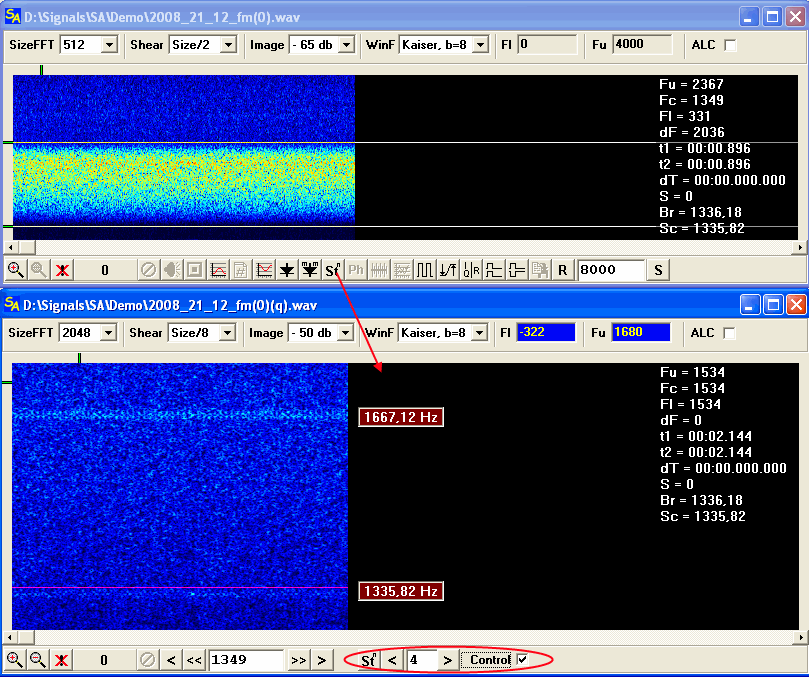
There are two not so clear lines, with frequencies of ~1667 and ~1336 Hz, In the module of obtaining of harmonics, in the fourth degree. The standard error in this case, that, usually, an analyst does not check the following higher harmonics, in this case there is a risk to skip brighter and correct/clear enough picture. However on this signal, the higher harmonics do not give any lines at all.
Usually, the purpose in the exponentation module in a degree of harmonic's getting, the is to get any possible lines, in case when lines are gotten, the chances to open the signal are very great. Not always quality of the signal or modulation allows to make it, but in our case there are hooks. It is necessary, starting with Suppositions that it is a PSK-like signal to prove a choice of one of frequencies as carrier frequency. Of course, in hard cases, it is necessary to sort out simply all variants, but that does not forbid to prove the first variant somehow. On preliminary "measures" taking, Fc - is defined at level of 1320-1350 Hz, it is logical to make the first, and probably not correct supposition that carrier will be will be somewhere in this area and the choice falls on frequency ~1336.
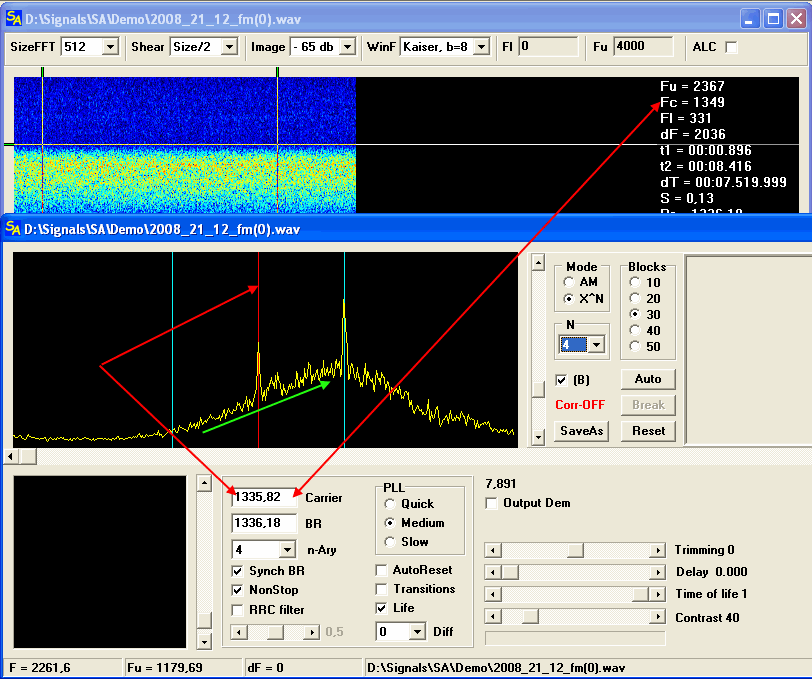
Lanuch Phase Plane module and specify the fourth degree, that degree, in which the lines were detected. Please Pay attention that the preliminary "not proved" carrier, has much bigger amplitude, and looks as real carrier much more convincingly. But it is also necessary to pay attention that the common tendency of the non-uniform spectrum is saved and approximately conform to initial non-uniformity. It means that ,easily, at the expense of the distorted frequency characteristic such non-uniformity in levels of the lines can be objective, and is not mandatory that the strongest line is really carrier, that is is possible that a preliminary choice and was not wrong, but correct.
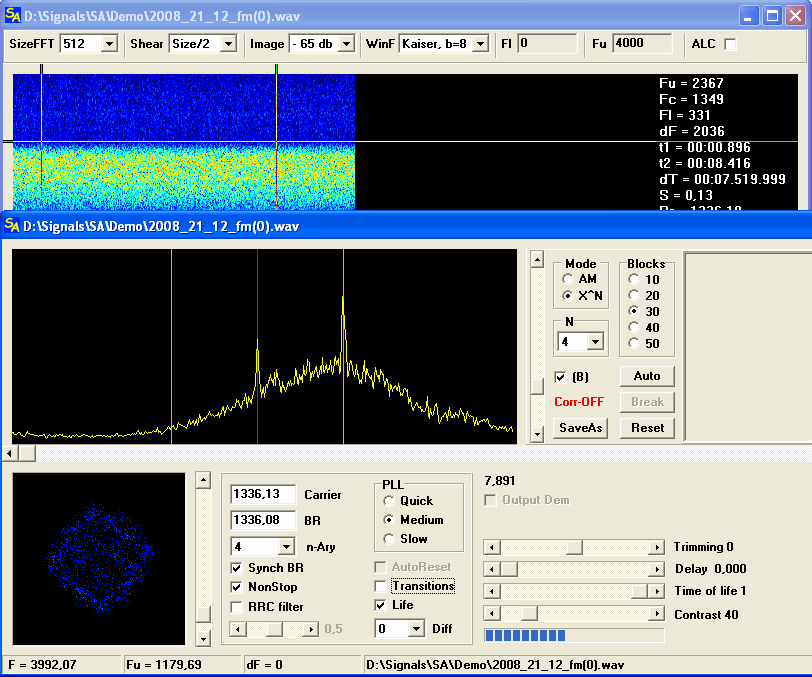
We start the process of constellation's mapping, after some time of capturing and synchronisation of the internal generators, the picture is more or less stabilised, and it will be possible to take advantage of the corrector for attempts to restore the signal.
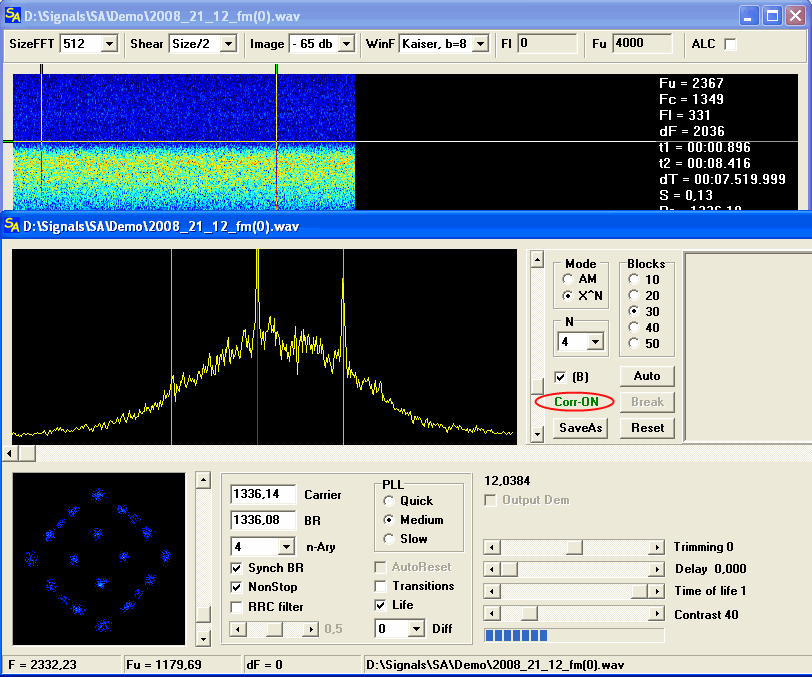
The corrector successfully copes with the task, and it becomes absolutely clear that the researched signal is QAM-16, but it has some features. On the lines of the external big square, the positions, which do not coincide with positions of standard constellation QAM-16 are used. It is desirable to understand somehow what these positions are andd how they are related with the signal.
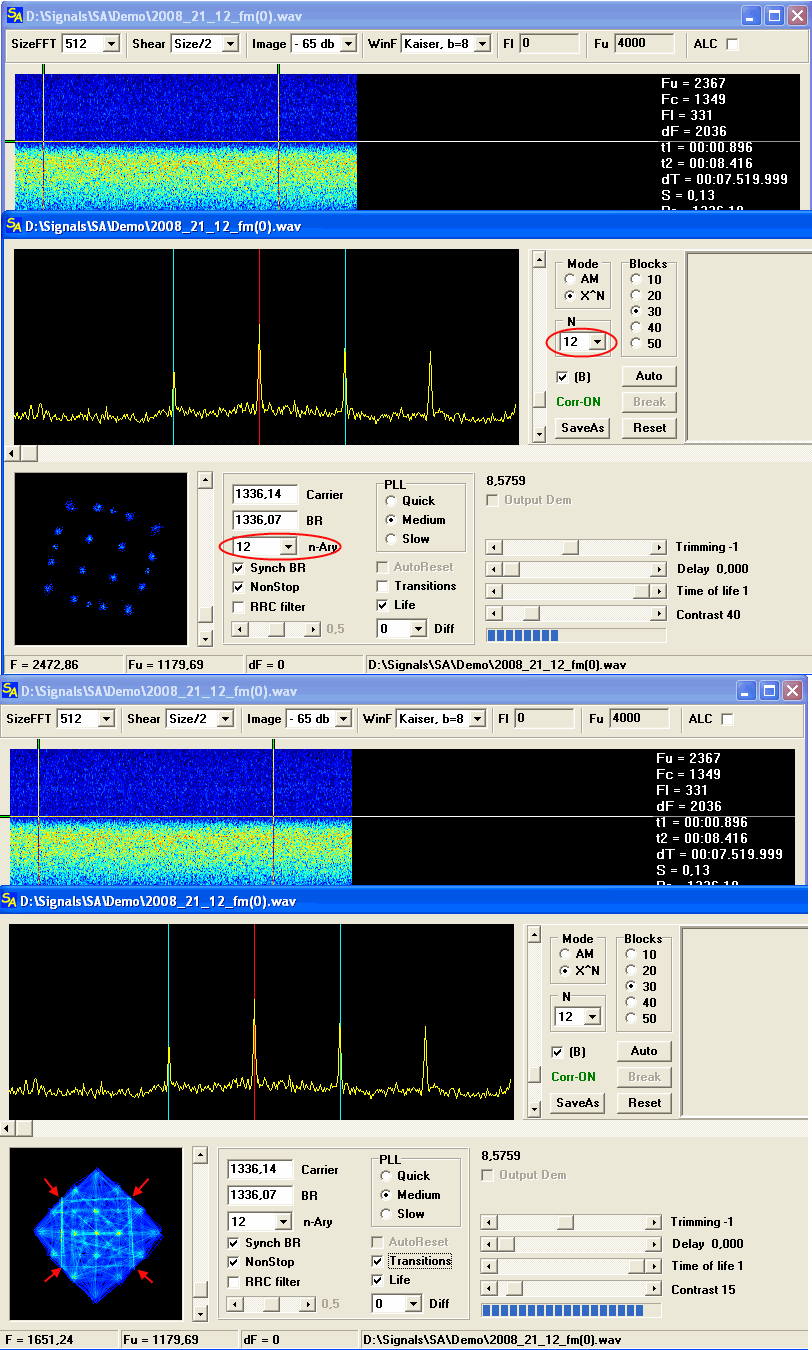
By having included mapping of transitions in the constellation, It is possible to notice that constellation's points produce the square in the main constellation QAM-16. If to look on the mapping transitions more attentive, then it is possible to notice that this additional square, is not linked by transitions to the main constellation. It is typical sort of constellation for QAM modulation, with so-called re-trainings. Re-trainings are injected into the signal specially, with the purpose to provide qualitative work of the adaptive corrector in the demodulator. It solves tasks of the qualitative demodulation of a signal in very hard and difficult conditions of reception, since re-trainings are known in advance to the receiving side, and the very effective tuning by time and setup of the adaptive corrector of the receiver are realized by re-trainings.
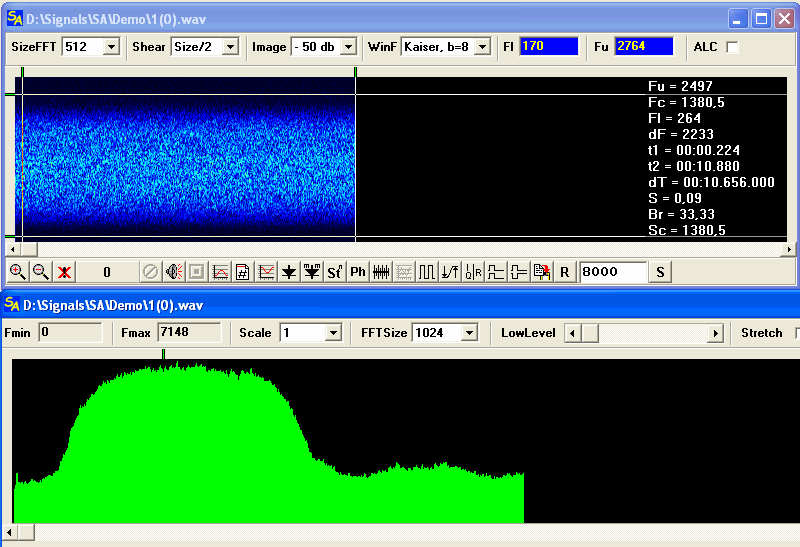
Having played with the semiautomatic corrector, and having selected more correct degree (12th) it is possible to receive the final signal with high quality enough. For the control this signal can be saved and cheked up for how should look the record with the absence of distortions or at their minimum value.
Much more regular allocation of the spectrum is visible, and besides, the signals of such quality, as a rule, do not call difficulties at the analysis, because practically at once in 12th degree, it is possible to recive value of the carrier, and the ideal constellation on phase plane. But in practice such signals are rare exception, than a rule.
The small video clip is attached to the article. The video clip, where the main course of process of getting of parametres of the signal and its correction is showed.
Good Luck.
|
|
|
|
Добавлять комментарии могут только зарегистрированные, активировавшие регистрацию и не ограниченные в доступе участники сайта!
|
| Файл создан: 27 Aug 2009 16:44, посл. исправление: 27 Aug 2009 21:39 |
|

